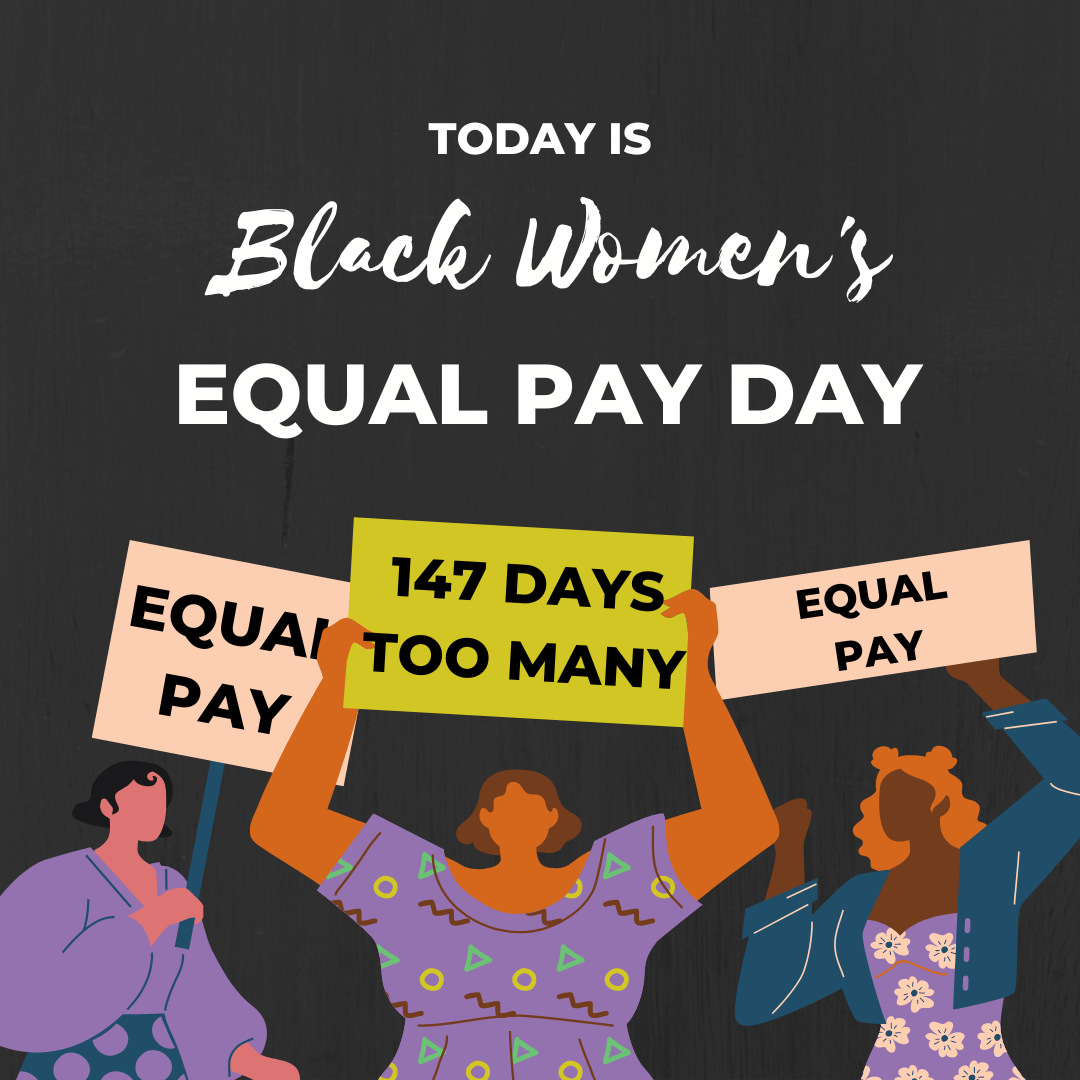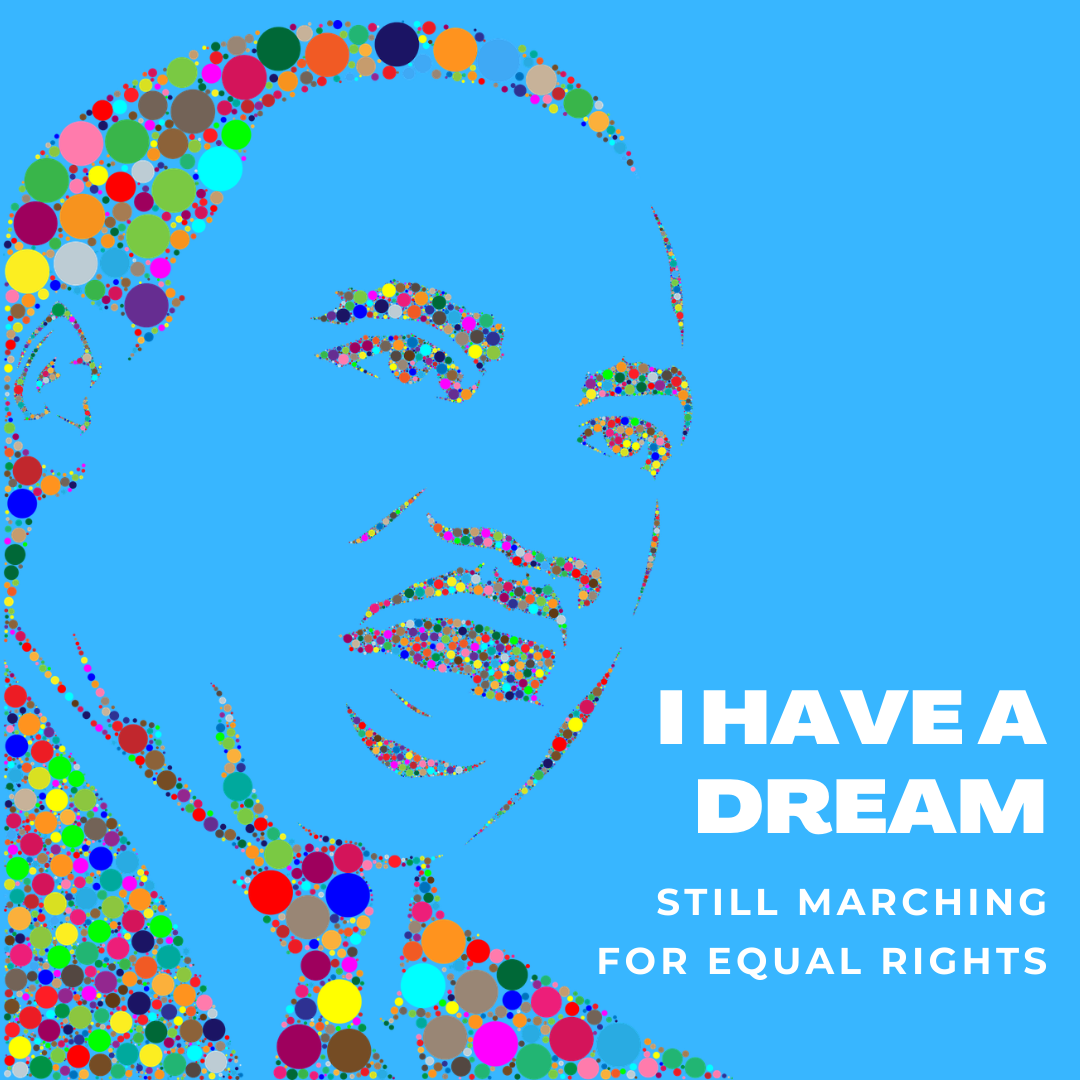Black Women's Equal Pay Day
147 Days Too Many
YouTube: Scripps National News: Black Women’s Equal Pay Day
Some calendar dates mark celebrations. Some commemorate triumphs. Today’s date is different in that it signifies how far we still need to go to achieve pay equity for Black Women.
Black Women’s Equal Pay Day occurs on a slightly different day each year. That’s because it’s based on a calculation. This year, August 3 represents the date that an average Black woman would have to work to – above and beyond a full year of work – to earn the same amount of money as an average white man.
That’s 147 extra business days of work – a full 21 weeks.

To look at it another way, Black women earn approximately 61 cents (research shows an approximation between 58 and 61 cents) for every dollar a white man earns at work.
This may come as a shock to those who’ve been observing the steady decrease in the gender pay gap generally. Based on 2019 workforce statistics, US women now earn 82 cents on the dollar compared with men, which translates into a $10K difference in annual earnings. The gap is smaller in Canada, where women earn 87 cents on the dollar. While there’s still work to do to close this gap, the progress made is undeniable given that the female-to-male earnings ratio was 72.5% in 1997 and 58.4% in 1967.
Why hasn’t the gap narrowed for Black women?
For Black women, the 61% ratio is shockingly close to that 1967 stat. For women generally, Equal Pay Day landed on March 15, almost five months earlier than Black Women’s Equal Pay Day.
The economic status of the Black female workforce illustrates the compounding force of intersectionalities on top of existing gender biases. Black women encounter workplace obstacles that are mostly unknown to their white colleagues, including:
- High pressure to conform with “white” standards of behaviour, speech, dress code and grooming.
- Microaggressions – small slights that cumulatively lead to diminished confidence, mental health disability and burnout.
- Impostor syndrome – feeling unworthy to request wage parity, allowing themselves to be lowballed on salary offers, and taking on additional tasks or unpaid overtime to prove themselves.
- Being required to hold university credentials to obtain jobs that historically have not required a post-secondary degree.
- Being subjected to interrogations in job interviews and performance reviews.
- Not seeing themselves reflected in leadership. (Despite comprising 3% of the Canadian population, Black people hold 1% of executive roles, and for Black women that percentage is much lower.)
The Gap is Persistent
Black women are the most highly educated group in North America, with the highest percentage of entrepreneurs. So why do they continue to be the lowest-paid group?
Contributing factors are complex and may be multi-layered:
Compounding these issues and challenges:
- 19% of Black Canadians live in lone-parent families, vs. 8% of the general population. The vast majority of lone parents are women. As such, they face workforce penalties that two-parent families do not. They may sacrifice a career track in order to be more available for their children. They may struggle to find daycare. They shoulder household burdens such as cleaning, cooking and driving children to school and activities. And they have less disposable income to pay for respite from childcare, which can lead to burnout – all of which may rob them of the focus needed to become a high achiever at work.
- Black Canadians are more likely than the general population to live in a multi-generational household. They may be responsible for caring for aging parents, grandchildren or extended family, which can also erode the time and energy otherwise available to pursue career goals.
- 46% of Black female employees report being “on guard” at all times against bias at work.
- 20% of Black women feel pressured to straighten their hair for work in order to fit in with cultural “norms.”
- Most Black Canadians do not believe their workplaces have mechanisms in place to ensure promotions are decided in a bias-free manner.
Possible Solutions
Just as the problem is complex and multifactorial, so are the possible solutions. But one thing is clear – it can’t be done without a commitment on the part of employers. This means collecting and analyzing hiring and retention data, documenting inequities among salaries, and taking actions to ensure parity occurs on a defined timeline.
It also means taking a hard look at representation. A staggering 0.8% of Canadian corporate boardrooms have Black members. Given that 75% of board recruitment occurs through direct referrals, there is a strong potential for existing board members to recruit like-minded and like-presenting fellow members, perpetuating this inequity. It is essential that corporations adopt a recruiting matrix that includes Black representation and gender representation among its criteria. This also applies throughout the organization with regard to programs, employee resource groups and educational opportunities.
Yet another way to lift Black women up is to provide mentoring and resources. Leaders can make an enormous difference by taking employees under their wing and giving them the opportunities and tools to succeed.
Lastly, visibility is key to closing the Black women’s pay gap. Organizations need to do better at representing Black women in their corporate materials, social media, and both internal and external communications. When Black women see themselves reflected, they get the message that they are valued and welcomed, and that they can thrive.
What can you do?
When it comes to wage inequities and salary transparency, you may think that the responsibility is on the employer to ensure fairness and equality. Not the case – there is a role for everyone to play.
Here are a few suggestions:
- Advocate for Black women – become true allies
- Shift your privilege by providing space for Black women to be seen, heard, and publicly recognized
- Document and celebrate Black women’s accomplishments and successes – give credit where credit is due
- Provide managerial support and encouragement
- Present new opportunities (especially those that lead to further advancement and/or promotion)
- Provide opportunities to connect Black women with senior leadership
- Ensure your DEI initiatives are up-to-date, effective, and actively in use.
- Provide training and educational tools. Topics can include:
- Eliminating microaggressions
- Pay transparency
- Debunking the “Angry Black Woman” stereotype/myth
- Being a true ally
- Speak up when you witness discrimination or discriminatory practices in use
- Provide opportunities for Black women to lead
- Focus on eliminating the unique barriers that Black women face in the workplace.
Don’t forget to mark your calendar for Black Women’s Pay Equity Day. When people ask you what it means, explain it to them. Tell them why it matters. And tell them you want the date to occur MUCH earlier than August 3 next year.





